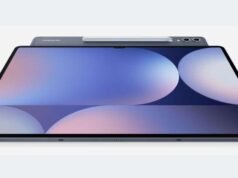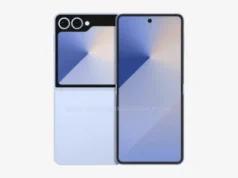Samsung is preparing to enter the extended reality (XR) space with the launch of its first XR glasses, slated for release in Q3 2025. Developed in collaboration with Google, these new glasses are expected to compete directly with Ray-Ban’s Meta glasses, a leader in the current wearable tech market. With an initial production target of 500,000 units, Samsung is aiming to make a strong impression in the XR market.
These glasses are expected to merge tech expertise with a sleek design and practical functionality, making them an attractive option for both tech enthusiasts and everyday users. By building on Google’s AI capabilities, they aim to stand out in an increasingly crowded wearable market, challenging brands that have already established themselves with tech-focused eyewear, such as Meta and Apple.

AI-Powered Functionality
the XR glasses will introduce advanced AI capabilities powered by Google’s Gemini AI assistant, allowing users to complete daily tasks with ease and convenience. The Gemini AI will enable functionalities like making payments, scanning QR codes, recognizing gestures, and even identifying faces to provide personalized interactions. These capabilities elevate the glasses beyond simple smart eyewear, positioning them as an advanced, AI-powered device that seamlessly integrates with the user’s routine.
This AI feature set marks a significant leap beyond what Ray-Ban Meta glasses currently offer, as Meta’s AI features focus on simpler tasks such as basic QR code scanning and reminders. these glasses promise a hands-free experience that enhances productivity and personalization, making them a valuable asset for users looking to incorporate smart technology into their daily lives.
Specifications and Design
According to industry reports from research firm Wellsen XR and the Maeil Business Newspaper, these XR glasses are expected to use Qualcomm’s AR1 chipset, the same one used in Ray-Ban Meta glasses, ensuring a robust and efficient performance. The glasses will include a 12MP camera and a 155mAh battery, similar to the battery capacity of Ray-Ban’s Meta device, though Samsung’s glasses will be slightly heavier at approximately 50 grams.

Notably, they have chosen to forgo a traditional display in favor of a compact, streamlined design that closely mirrors the sleek, lightweight appearance of fashion-focused models like the Ray-Ban Meta glasses. By removing the display, Samsung is able to maintain a minimalist look without sacrificing advanced AI-driven functionality. This design choice highlights Samsung’s commitment to creating smart eyewear that blends seamlessly into everyday life without drawing unnecessary attention to its tech components.
Samsung’s XR Ecosystem: A Dual Approach
Alongside its XR glasses, Samsung is reportedly developing a high-performance XR headset aimed at delivering immersive, VR-like experiences that cater to users looking for more powerful and interactive technology. This premium headset, rumored to run on Qualcomm’s XR2+ Gen 2 platform, is expected to feature high-resolution displays and enhanced computing power. While the glasses are positioned as a lightweight, everyday wearable for users seeking hands-free, AI-driven support, the XR headset is likely to appeal to those interested in more immersive, extended reality applications, such as virtual reality gaming, 3D content consumption, and more complex XR experiences.
By launching both an model and a more robust XR headset, Samsung is establishing a comprehensive product lineup that caters to a broad range of XR needs. This dual approach could provide Samsung with a competitive advantage, addressing the demands of both casual users and XR enthusiasts, and positioning Samsung as a key player in the expanding XR market.
(Via)






